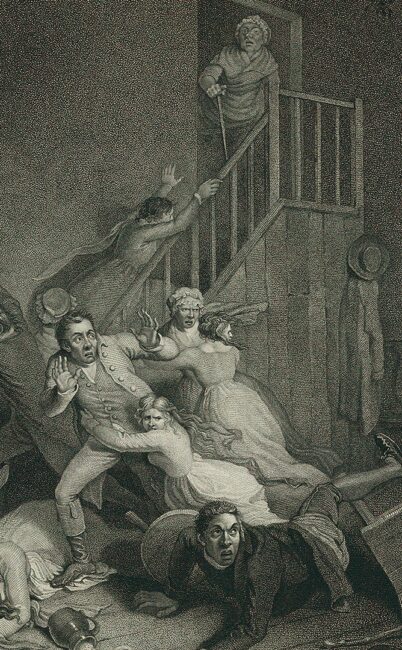Have you ever listened to Andy Williams sing “it’s the Most Wonderful Time of the year” and heard the Lyrics:
“There’ll be parties for hosting
Marshmallows for toasting
And caroling out in the snow
There’ll be scary ghost stories
And tales of the glories of
Christmases long, long ago.”
And thought Wait….what? …..Scary Ghost stories at Christmas? As if falling asleep with all the chaos and excitement of the Jolly red fat man arriving keeping us all awake wasn’t enough?
For many, it may have been just a throw away way lyric because it simply just rhymed with the rest of the verse, maybe it was just something Andy Williams and his family did as their own tradition?
Well…as it turns out the tradition of telling ghost stories for Christmas is an actual tradition – and maybe one that needs a little more attention (I’m thinking)
The truth is, the song “It’s the Most Wonderful Time of the Year” was originally written by U.S radio and television producers Edward Pola and George Wyle in 1963 and the line in question, while truly unknown as to why they chose to include it, was likely a reference to Charles Dickens “a Christmas Carol” Which as we know includes the ghosts of past, present and future (makes sense) to which in itself is based on the long tradition of telling ghost stories at Christmas. And while “A Christmas Carol” was very much a British Christmas staple that also became a hugely popular piece of literature in the U.S during the Christmas season – the only difference being, (thanks to a greater influence of Irish and Scottish immigration) the tradition of telling ghost stories became more of a Halloween tradition rather than a Christmas tradition.
The precise reason for telling ghost stories as a UK tradition is still relatively unknown, however, some theorize that perhaps it is related to the season around the winter solstice, which is usually recognized as one of transition and change. Throughout history, the winter solstice has provoked oral stories about spooky things in many different countries and cultures all over the world and spooky storytelling gave people something to do during the long, dark evenings before electricity. Long midwinter nights meant folks had to stop working early, and they spent their leisure hours huddled close to the fire.It was in Victorian England that telling supernatural tales at the end of the year – in particular, during the Christmas season that telling ghost stories went from an oral tradition to a timely trend. This was in part due to the development of the steam-powered printing press during the Industrial Revolution which made the written word more widely available.
This allowed Victorians to commercialize and commodify existing oral ghost stories, turning them into a version they could sell. Higher literacy rates, cheaper printing costs, and more periodicals meant that editors needed to fill pages so around Christmas time, they figured they could convert the old storytelling tradition to a printed version.As it turned out, people who moved out of their towns and villages and into larger cities still wanted access to the supernatural sagas they heard around the fireplace growing up. Fortunately, Victorian authors like Elizabeth Gaskell, Margaret Oliphant, and Arthur Conan Doyle worked tirelessly to cook up these stories and have them ready to print in time for Christmas.
Historic illustrations and diary entries have given an insight as to how the telling of horror-filled holiday tales continued to be a family affair in England, even when they were read rather than recited. The popularity of Victorian Christmas ghost stories also transcended socioeconomic status. They were available to read everywhere from cheap publications to expensive Christmas annuals that middle-class ladies would show off on their coffee tables.
Their broad audience was reflected in the stories themselves, which were sometimes based upon working-class characters, and other times took place in haunted manor houses. These upper-class settings were intended to invite readers from all classes into an idealized, upper-crust Christmas.So, I’m sure you’re wondering why this is less of a tradition now compared to those that have become more embedded in the Christmas lore and tradition that we know today.
Well, the answer may be left with maybe the man who most notably popularized the tradition himself – Charles Dickens who discontinued his Christmas publications in 1868, stating in a complaint to his friend Charles Fechter:“As if I had murdered Christmas several years ago (perhaps I did!) and its ghost perpetually haunted me.”
Many had tried to fill the void left by Dickens by seemingly nothing could compare to “A Christmas Carol”, thus creating a steady decline in the Christmas tradition.
So with that being said – maybe it’s time to resurrect an old tradition, add a little spooky, maybe even a little dash of macabre to the Holly and Jolly, or even emphasize a little more “spirit” when it comes to “Christmas Spirit”?
What do you think? Will ghost stories be shared around the family in your house this Christmas?
-Sam

